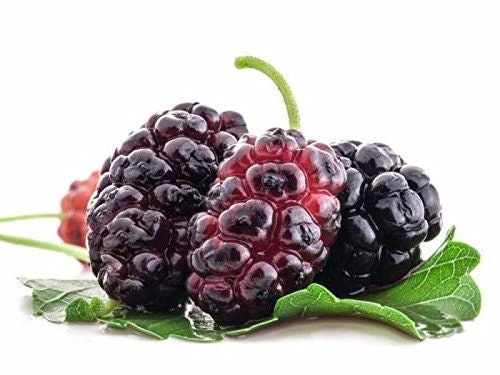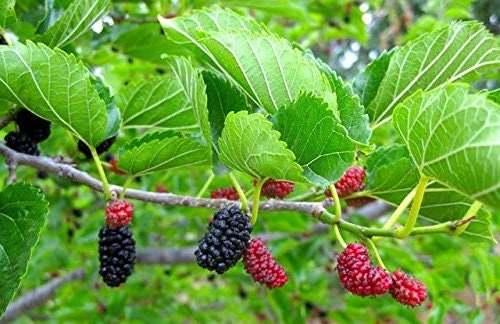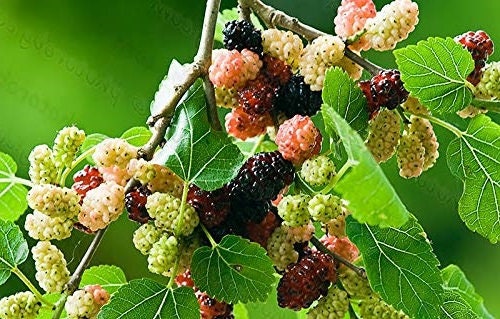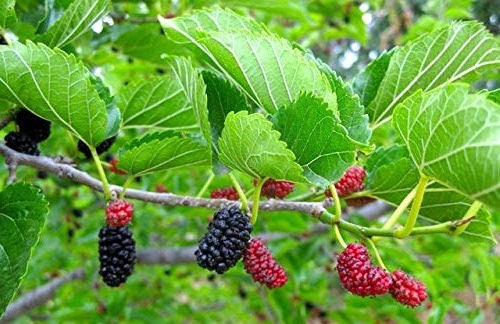1
/
of
4
Florida Plants Nursery
Red Mulberry
Red Mulberry
Regular price
$24.99
Regular price
$29.99
Sale price
$24.99
Unit price
/
per
Shipping calculated at checkout.
00
:
00
:
00
{"id":51210900570395,"title":"Default Title","option1":"Default Title","option2":null,"option3":null,"sku":null,"requires_shipping":false,"taxable":true,"featured_image":null,"available":true,"name":"Mega Pack 100 Pages Adults Coloring Book","public_title":null,"options":["Default Title"],"price":599,"weight":0,"compare_at_price":1099,"inventory_management":null,"barcode":"","requires_selling_plan":false,"selling_plan_allocations":[]}
Couldn't load pickup availability
- Grow your own food
- Organic and Non-GMO
- FREE Shipping
You will receive a healthy Red Mulberry Starter tree.
Most images depict mature flower.
Mulberries are mostly hardy in USDA zones 5 to 9. Plant large mulberry trees in a meadow or yard away from the house or areas where the fruits may stain.
Planting
Plant mulberry trees in spring in full to part sun location on well drained, compost amended soil. They’re forgiving of poor soil conditions. Space large trees at least 30 feet apart and smaller trees 10 to 15 feet.
Growing
Mulberries are easy to grow. Fertilize in spring with compost and mulch to keep the soil evenly moist. Prune young trees in late winter to develop strong structural branches. To keep tall varieties in bounds, consider summer pruning to cut back the branches and make the tree more of a rounded shape. Mulberries have few pests other than birds. Usually a large tree will produce more mulberries than you and the birds can eat, but for dwarf and weeping types, cover the trees with netting during fruiting.
Harvesting
Mulberries will often drop from the tree when ripe. Place sheets under a tree and shake the limbs to harvest large quantities of the berries or hand pick mulberries once they turn the mature color for that variety. Use them for cooking in pies and making juice. Mature fruits can also be dried for winter use.
View full details
Most images depict mature flower.
Mulberries are mostly hardy in USDA zones 5 to 9. Plant large mulberry trees in a meadow or yard away from the house or areas where the fruits may stain.
Planting
Plant mulberry trees in spring in full to part sun location on well drained, compost amended soil. They’re forgiving of poor soil conditions. Space large trees at least 30 feet apart and smaller trees 10 to 15 feet.
Growing
Mulberries are easy to grow. Fertilize in spring with compost and mulch to keep the soil evenly moist. Prune young trees in late winter to develop strong structural branches. To keep tall varieties in bounds, consider summer pruning to cut back the branches and make the tree more of a rounded shape. Mulberries have few pests other than birds. Usually a large tree will produce more mulberries than you and the birds can eat, but for dwarf and weeping types, cover the trees with netting during fruiting.
Harvesting
Mulberries will often drop from the tree when ripe. Place sheets under a tree and shake the limbs to harvest large quantities of the berries or hand pick mulberries once they turn the mature color for that variety. Use them for cooking in pies and making juice. Mature fruits can also be dried for winter use.




S
Sabrina White Great quality packing. Thank you!
S
Scott Scott Fast delivery and excellent quality.
S
Shirley Kelly The plants are healthy and beautiful.
D
Diana Ward No problems. Plants arrived looking good, and I received two instead of one plant.
J
Justin Bowers DVM Arrived in perfect condition, thanks!



